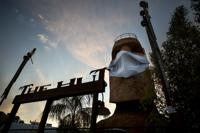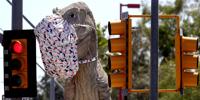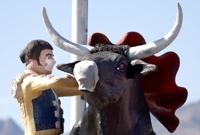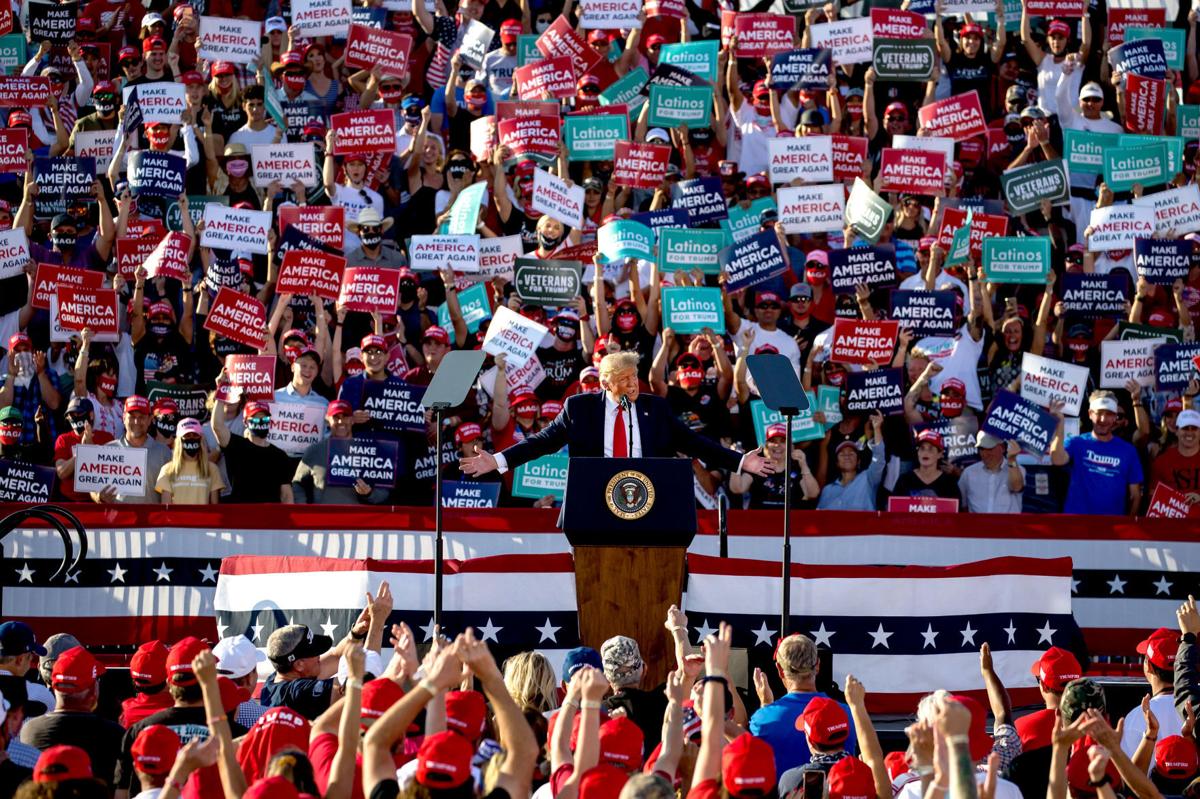Gov. Doug Ducey is defending allowing and attending potential “super-spreader” political rallies for President Trump — and not wearing a mask — even as he concedes the number of cases of COVID-19 in Arizona will rise and he is urging people to take precautions.
At a press briefing Thursday — the first specifically on the issue of the virus in more than a month — Ducey pointed out that his executive order banning gatherings of more than 50 does not apply to activities protected by the First Amendment. That, he said, includes what the Trump campaign organized even though governors of some other states have imposed and enforced their own bans on such large gatherings.
And Ducey bristled at even being asked about the issue.
“I don’t remember you asking me any question like this as peaceful protests were happening, undeterred, inside our state,” he said.
But Dr. Cara Christ, the state health director, acknowledged that the fact that a political rally might be constitutionally permitted does not make it safe.
“I think any large group is a potential risk for spreading,” she said. Christ noted that having an event outdoors does lessen the risk.
It does not, however, eliminate it. And a large percentage of those at these events have not been wearing masks.
“We would recommend any time people attend a large gathering, if you think you’ve been exposed to or are infected with COVID-19 to go get tested,” Christ said.
In fact, Christ said people should not underestimate the risk of even smaller gatherings in spreading the disease.
She specifically is worried about what happens when families get around the Thanksgiving table, especially when children have just returned from college for the holidays. The health director said they may be carrying the virus, noting that the highest rate of infection is among those ages 20 to 44.
“They’re going to be coming home and may not be going back to school during Thanksgiving, and then having holiday celebrations,” Christ explained.
“I hope that I am wrong,” she continued. “But what I anticipate is to see a spike about 10 to 14 days after Thanksgiving, and then, potentially, a continued increase over the next four to six weeks.”
QUIET CHANGES TO SCHOOL GUIDANCE
Ducey’s briefing came on the heels of the state health department quietly making changes in the metrics they are using to help school officials determine when to consider reverting to all-online instruction.
All 15 counties are currently classified as having a “moderate” threat of spread of the virus.
The original recommendation said that they should consider abandoning in-person instruction if any of the three things being measured by the state move from moderate to “substantial” spread. That includes the number of cases, the percent of tests coming back positive for the virus, and the percentage of hospital visits by people with COVID-like illness.
Last week, however, the instructions were changed to say that there should be a return to virtual learning only if all three metrics go into the substantial range. That means a spike in cases in a community or county would no longer qualify if, say, hospital visits remain low.
Ducey said too much was being made of the change.
“These adjustments are just that,” he said. “They are guidance.”
The governor said he understands there are teachers with underlying health conditions who may not want to be in school and parents who don’t want their children in a classroom. He said, though, that should be the exception, not the rule.
“Where it is possible and safe, we want our schools open and we want our kids inside a classroom, with a teacher at the front of the classroom, and them getting the best, safest education possible,” Ducey said.
And the governor said that change was done in consultation with education leaders.
But Chris Kotterman, lobbyist for the Arizona School Boards Association, said the way elected board members around the state found out about it was through the media.
“We weren’t consulted on it,” he said. “We don’t like it when fundamental policy changes that impact the operation of public schools are not communicated clearly.”
The surprise, however, is only part of the problem. Kotterman said school board members “absolutely” see the change as having political overtones.
“There definitely are groups out there that believe that schools should be open and are pressuring their local governing boards to just reopen the schools and everything will be fine if only vulnerable people stay home and all that sort of stuff,” he said. Add to that, Kotterman said, are statements by Trump saying that the closures are “all politics.”
And when the health department suddenly changes the guidelines, he said, board members “tend to assume the worst, unfortunately.”
Late Thursday, Arizona schools chief Kathy Hoffman weighed in, disputing the governor’s contention that she was involved in the decision.
“The Arizona Department of Education did not request or recommend any changes to the Arizona Department of Health Services school benchmarks,” she wrote in a Twitter post.
THE NEXT WAVE
The governor himself said he’s anticipating an increase in cases, pointing out the nationwide trend.
“Arizona is no different,” Ducey said. What is different, he said, is that the state is better prepared.
“We’ve been through this before and we’ve learned what works to combat this virus,” he said. “We’ve had time to prepare.”
Ducey also said Arizona is doing better than a lot of other states, saying that only 12 other states have a lower rate of infection per 100,000 residents in the past seven days. And he said Arizona has the 20th lowest rate of tests for the virus coming back positive.
But the governor omitted one indicator: the effective reproduction rate, a figure he crowed about when in July and August it showed a decrease in spread. As of Thursday, however, it reached 1.16, the highest it has been since June 6.
The more the number is above 1.0, the faster the spread. And the figure puts Arizona among the top 18 states for spread.
Asked about that figure, Ducey brushed it aside.
“There’s a lot of metrics that one looks at as they make decisions around this,” he said. Still, Ducey said he anticipated the increasing spread.
“This is a virus,” he said.
“It’s contagious,” the governor continued. “What we want to do is slow it, contain it to the best of our ability.”
And when there’s a vaccine?
“We will come as close as we can to stopping it, although, if it’s like other viruses, it will likely always be out there,” Ducey said. “It’s just at what level.”
Photos: In Tucson, face masks are for more than just people
Face masks on objects
Updated
A Jeep sports with eyes like those from the movie "Cars" sports a COVID19 mask outside Alpha Graphics near the corner of Tanque Verde and Kolb, Tucson, Ariz., July 3, 2020.
Face masks on objects
Updated
The large Tiki head at the entrance of The Hut, 305 N. 4th Ave., wears a mask in response to the Coronavirus Disease (COVID-19) in Tucson, Ariz., on April 5, 2020.
Face masks on objects
Updated
The noted bull testicles on the statue outside Casa Molina at Speedway and Wilmot, usually painted in various schemes and wild colors, are in these CONVID19 times now sporting a face mask, March 27, 2020, Tucson, Ariz.
Face masks on objects
Updated
A dinosaur statue over the doors of MATS Dojo at 5929 E. 22nd St., sports an athletic cup for a face mask in the second week of COVID-19 restrictions, March 31, 2020, Tucson, Ariz.
Face masks on objects
Updated
The venerable T-Rex outside the McDonald's at Grant and Tanque Verde comes around late, but strong, to the mask game, May 13, 2020, Tucson, Ariz.
Face masks on objects
Updated
The iconic Casa Molina bull and matador statue both sported masks on the first full week of the loosening of COVID-19 restrictions in mid-May.
Face masks on objects
Updated
Father Kino's horse practice safe social interaction by wearing a mask even if Father Kino himself isn't. The statue sits at Cherry Fields at 15th Street and Kino Boulevard, Saturday, May 2, 2020, Tucson, Ariz.





